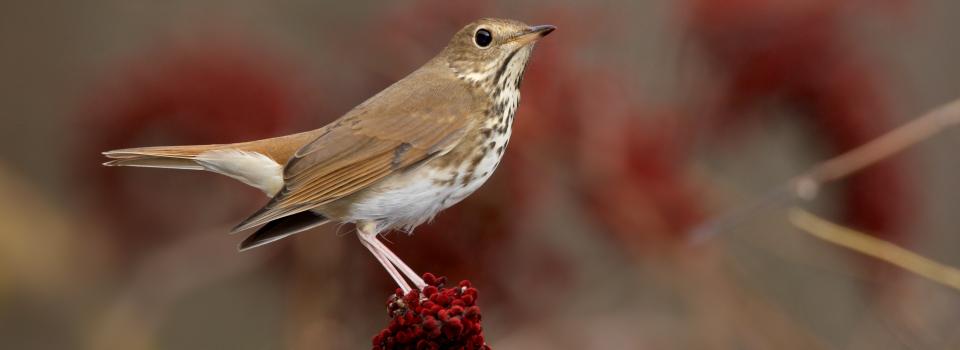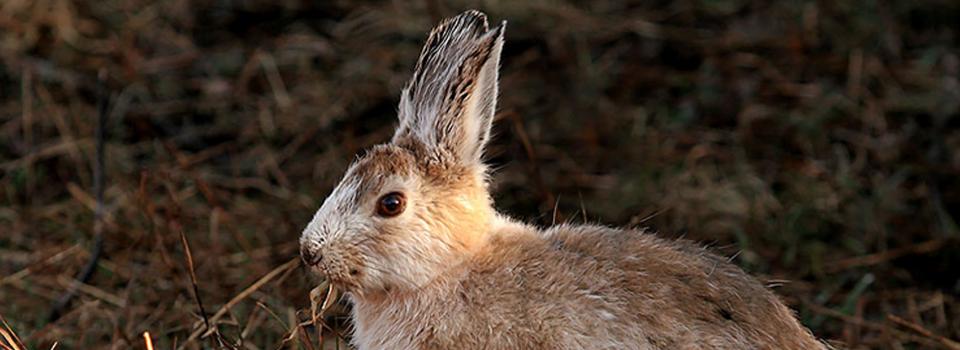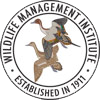
Hermit Thrush
Photo by: Robert Royse

Box Turtle
Photo by: Jonathan Mays

Snowshoe Hare
Photo by: Mike Hodgson

Timber Rattlesnake
Photo by: Kelly Wiley

Gray Seal
Photo by: Jonathan Mays








Emerging infectious diseases are one of the most important factors contributing to global amphibian declines and have been implicated in local extinctions of several species. Amphibian declines due to the Chytrid fungus, Batrachochytrium dendrobatidis (Bd), have received considerable and well-deserved attention over the last decade. However, reports of significant mortality due to outbreaks of Ranavirus (Family Iridoviridae) are becoming increasingly common in the U.S. with the reported number of die-offs 3-4X greater than for Bd. Ranavirus differs from Bd in that both amphibian and reptiles are known to be affected. Unfortunately, information on the timing, extent, and frequency of occurrence of outbreaks of Ranavirus remain limited, partially due to lack of surveillance and partially due to the rapid onset and mortality caused by the disease. This is especially true for amphibian larvae; in many cases, only a few days elapse between the initial signs of the disease and the disappearance of tadpoles from the environment. Thus, unless observations are directed at detecting the outbreak of the disease, it would be easy to conclude that absence of tadpoles was the result of a rapid metamorphosis, instead of mass mortality from a disease outbreak. Ranavirus has been confirmed in six amphibian genera found in the Northeast U.S., including the following (with the number of RCN species in that genus listed by at least one Northeastern state in parentheses): Bufo (3), Hyla (4), Rana (7), Pseudacris (5), Ambystoma (9), and Notopthlamus (1). Northeast Partners in Amphibian and Reptile Conservation’s (NEPARC) considered Ranavirus a major threat to northeastern herpetofauna at their 2011 Annual meeting. Ranaviruses likely represent the greatest pathogen threat to the biodiversity of amphibians in North America. In order to begin to better understand the extent to which Ranavirus is impacting amphibian and reptile populations in the Northeast U.S. and to develop and test a sampling protocol that could be used throughout the region, we propose a survey of amphibian larvae at a number of wood frog (Rana sylvatica) breeding ponds in Maryland, Delaware, New Jersey, Pennsylvania, and Virginia. Wood frogs have the highest mortality and infection rates of northeast amphibians and their breeding ponds (primarily vernal pools) may be the main source of the disease for other affected species. Our approach involves sampling 10 ponds per state per year for two years, with samples spread over different watersheds and physiographic provinces to test the applicability of these methods to a diversity of regional conditions. Outcomes from this effort will include a standard regional Ranavirus sampling protocol, a relative frequency of mortality events within the 5-state sampling area which can be extrapolated to a regional perspective, a summary of known or suspected Ranavirus events in the 13 northeastern states, and publications in peer-reviewed scientific journals.
UPDATE (July 2017)
The final report is completed and provided below.
Name: Scott A Smith
Title: Wildlife Ecologist
Organization: Maryland Department of Natural Resources
Email: sasmith@dnr.state.md.us
Address: PO Box 68, Wye Mills, MD 21679
Phone: 410-827-8612 x103
Fax: 410-827-5186
Name: Richard A Seigel, PhD
Title: Professor
Organization: Townson University
Name: Cindy P Driscoll, DVM
Title: State Wildlife Veterinarian, MD DNR
Name: Kirstin J Monson, PhD
Title: Assistant Professor
Organization: Montclair St University
Name: Evan H Campbell Grant, PhD
Title: Wildlife Biologist
Organization: USGS Patuxent Wildlife Research Center
Name: Brian Zarate
Title: Senior Zoologist
Organization: NJ Division of FIsh and Wildlife
Name: Chris Urban
Title: Natural Diversity Chief
Organization: PA Fish and Boat Comm
Name: John D Kleopfer
Title: Herpetologist
Organization: VA Dept Game and Inland Fisheries
Name: Holly S Niederriter
Title: Wildlife Biologist
Organization: DE Division of Fish and Wildlife
Name: Scott D Farnsworth
Title: Biologist
Organization: Townson University

© 2020 A Wildlife Management Institute Project